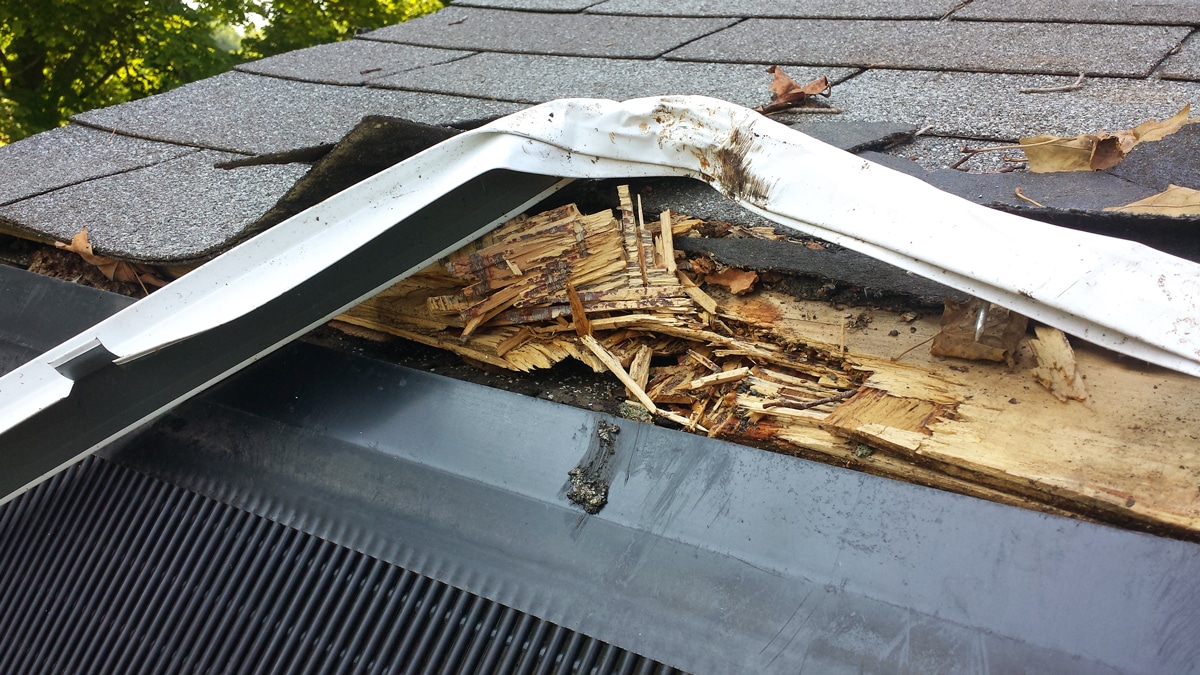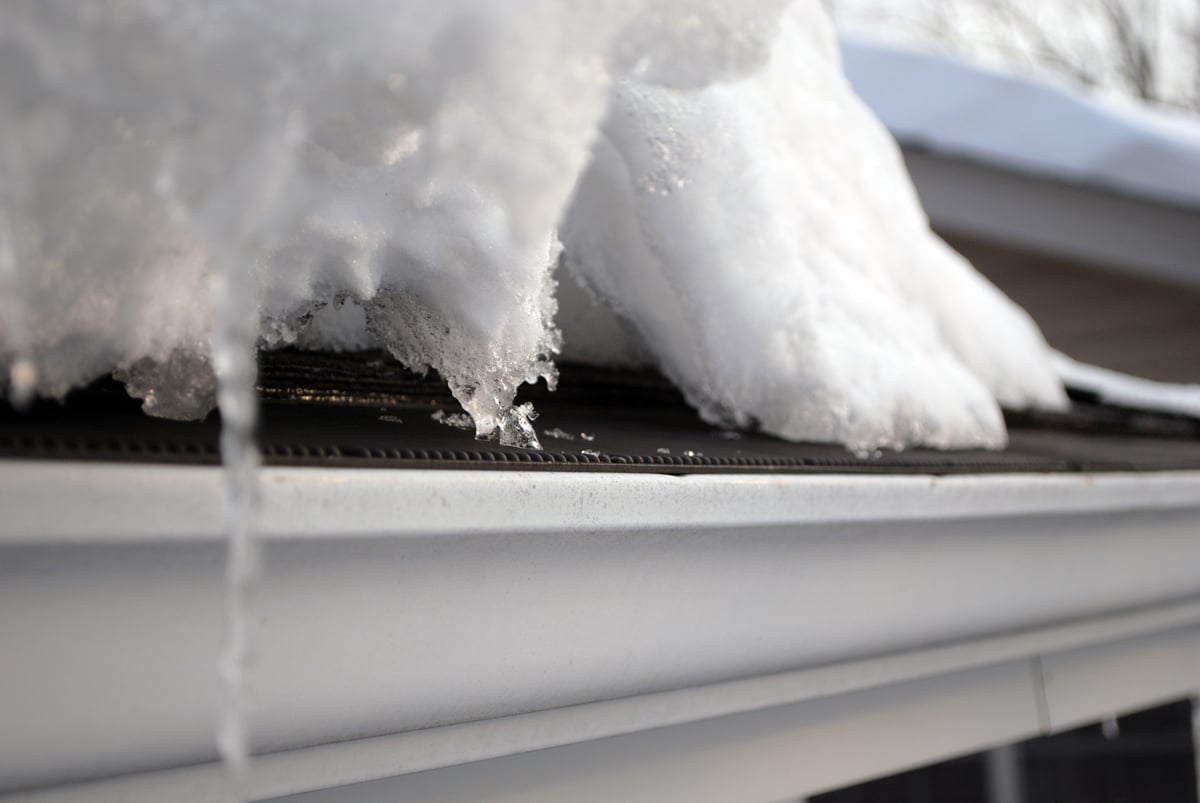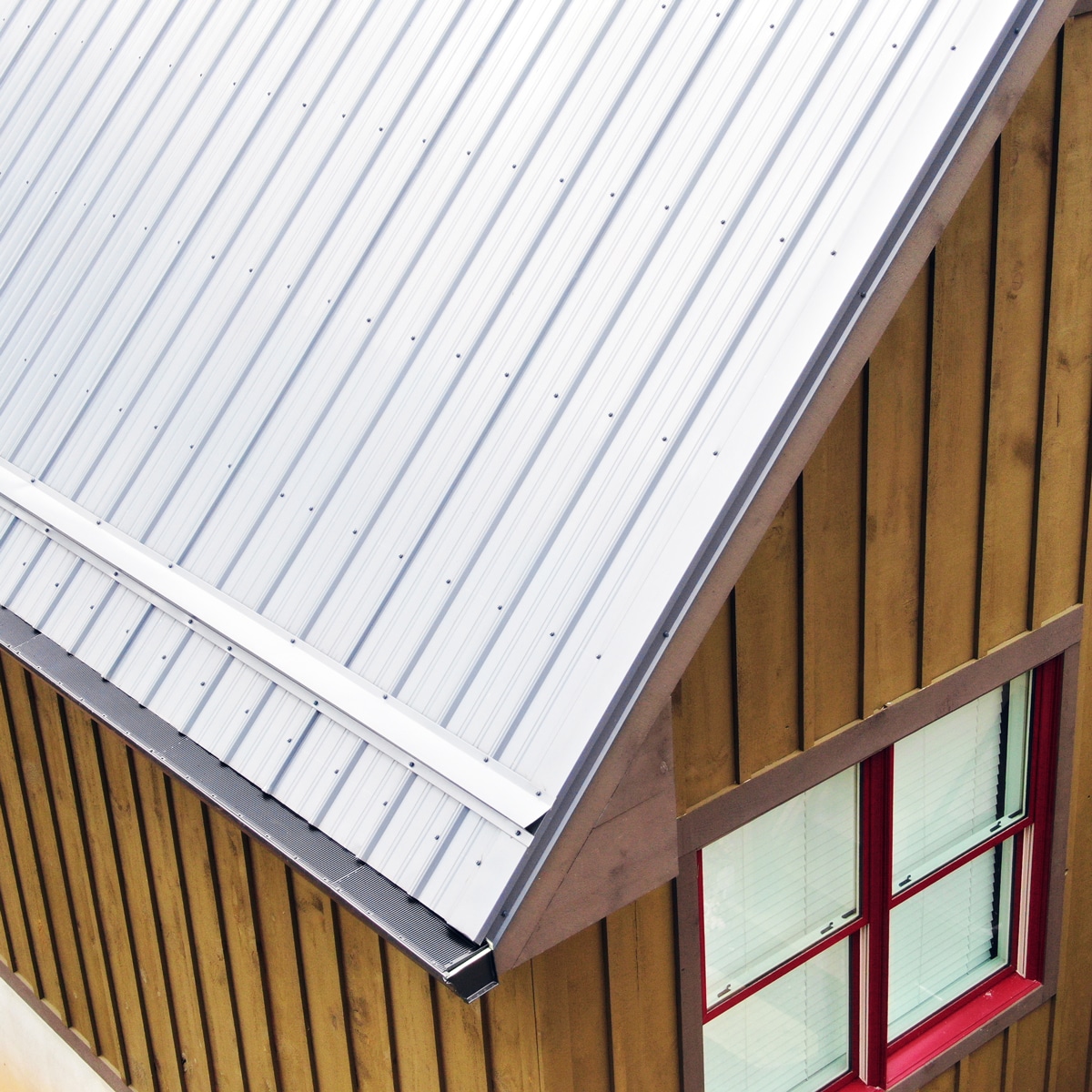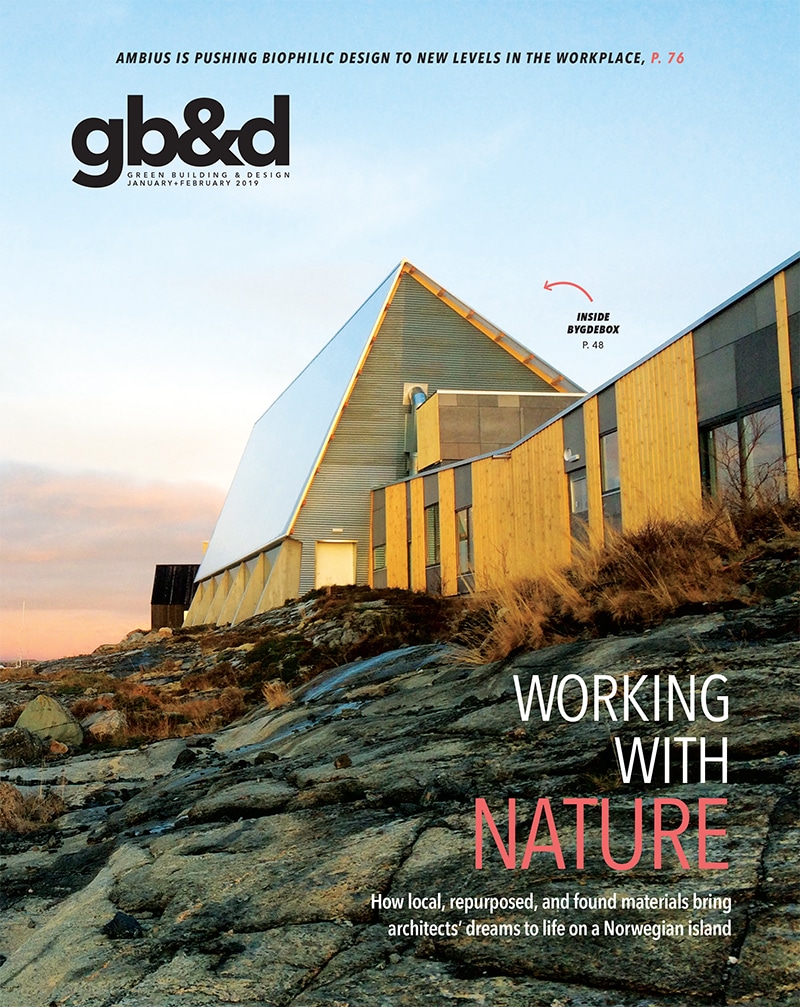
[Photo: Courtesy of Raindrop Gutter Guard]
An expert guide to high-performance, low-maintenance, design-friendly gutters.
Steve Nitch started his roofing career in 1985 in the Midwest, where he learned the ins and outs of directing—and sometimes tricking—water to pour off roofs, into gutters, and away from the foundations of homes and businesses. It was a frustrating mission. Even with the number of gutters and gutter guard options available, none were quite up to the task of handling large amounts of water, staying clean, and generally doing what they’re supposed to do.
Nitch decided to come up with his own solution. At a barbecue one day, he found himself playing horseshoes with a number of corporate R&D engineers. The group was fascinated with the gutter guard puzzle: Guards need to handle any amount of rainwater, keep debris out of the gutter, and withstand destructive weather, exterior degradation, and different climates. They must do all this while offering curb appeal, adapting to different gutters and roof styles, and remaining cost effective. The group jumped onboard to help. “I had some of the best minds working with me,” he says. “I believe we solved all the issues.”
FROM OUR JAN+FEB 2019 ISSUE
The preferred publication of leading green professionals.

A family-owned business developed a groundbreaking solution for your gutters. [Photo: Courtesy of Raindrop Gutter Guard]
1. Designed for Performance
Nitch’s Raindrop Gutter Guard system starts with a sloped grid made of damage-resilient polypropylene that breaks self-cohesion of water droplets, immediately forcing water into a gutter. Unlike metal mesh designs—which keep almost everything out of the gutter, including water—the aperture size of the polypropylene grid prevents large debris from clogging the gutter but allows smaller debris to sweep through.
“In letting the smaller stuff through you can handle a ton of water,” says Ben Nitch, director of Raindrop’s marketing and sales and second generation of the family-owned business. “The granules will flush through the system, and the gutters will work as they’re supposed to.”
2. Withstands Extreme Temperatures
Raindrop polypropylene, with added UV stabilizers, is the same material automakers use for car bumpers. It’s made to be resilient.
What’s more, the dark color of the product soaks in heat from the sun during the cold months, naturally melting snow and ice to keep water flowing into the gutters year-round. Heat cables can also be installed just under the guard for added winter water flow.
The company’s most concentrated customer is around Wisconsin, where winter temperatures sit below freezing for months at a time. Summer can be just as extreme, with temperatures near a building roof rising 20 or 30 degrees higher than ground temperatures. “Vinyl products only last one or two years in these temperatures before they become brittle and fall apart,” Ben Nitch says. “Our product lifespan is expected for 23 years before you might see a breakdown.”
3. Built to Endure
Like the automakers that noticed the benefits of polypropylene’s flexible properties for car bumpers, Steve Nitch notes that his guards can withstand a lot of damage, even from trees. Where other materials break, the polypropylene bends and bounces back.
Raindrop also offers a 20-year warranty on its product that the company has only had to use a handful of times. The earliest installed Raindrop guards are about 18 years old, and the team is planning for a free take-back program to have the old products recycled as well as offering a new product discounted rate.

Raindrop Gutter Guard products won’t clog and could last you 20 years or more. [Photo: Courtesy of Raindrop Gutter Guard]
4. Engineered for Easy Maintenance
Clogging is an annual gutter guard problem Steve Nitch’s team engineered away. Where other products lay flat to handle water, Raindrop guards are designed to be installed at a pitch, as a continuation of the roof, to keep debris moving off the gutter.
“We came up with a widemouth outlet that opens the downspout outlet and gets rid of snagging possibilities,” Ben Nitch says. The feature ensures all water flushes through, taking micro debris with it. Raindrop also offers a downspout clean-out system to assist homes with underground drain tiles or water harvesting systems.
It’s all part of a system designed for easy, hands-off use that has roofers like Mike Gabrione and his Chicago-metro area company coming back each year. Gabrione first installed a Raindrop Gutter Guard half a decade ago, but since then he’s installed hundreds of systems for his clients.
“There are so many different manufacturers coming out with this and that, but we love Steve’s product and the company does such a great job,” he says. “It’s a combination of a very good product that actually works and installs safely and securely, and knowing that if there is a problem Steve and the company will stand behind it.”
5. Manufactured with Aesthetics in Mind
Featuring clean lines, a low profile, and a dark color, the Raindrop Gutter Guard blends naturally into most built environments. The guard is virtually invisible from the ground, appearing to be nothing more than a shadow line. “You look right past it,” Ben Nitch says. “We’ve had a lot of compliments about that, especially compared to solid gutter covers that are large and bulky.”
The design installs easily into roof systems using asphalt singles, cedar shakes, metal, slate, and tiles. The Nitches manufacture their product to fit most gutter sizes, including 5- and 6-inch K style gutters, half rounds, large commercial gutters, trough-style gutters, wood, and more.
Raindrop Gutter Guards have been installed on new builds and historic buildings alike, including the Humboldt Park Fieldhouse in Chicago, where the guard was used alongside copper gutters.


